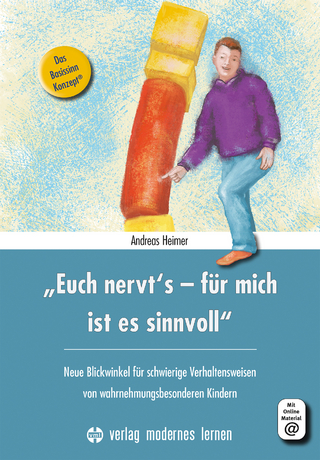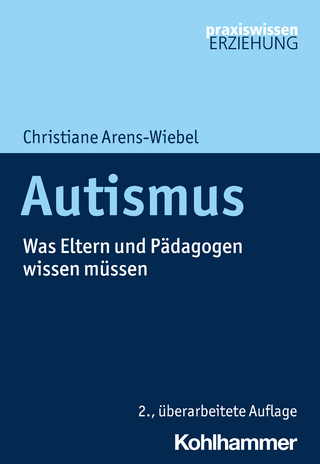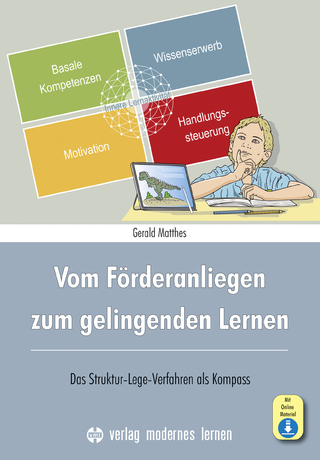
The Inclusion Toolbox
Corwin Press Inc (Verlag)
978-1-4833-4415-7 (ISBN)
The tools you need to build meaningful inclusive practices into your education program
Even the most experienced educators struggle with the challenge of designing and delivering meaningful inclusive practices in their school communities and classrooms. How can you deliver meaningful learning experiences that meet the needs of ALL students? The Inclusion Toolbox is an all-in-one resource that combines research-based strategies and practical tools to help you design and implement a truly inclusive education program.
The Inclusion Toolbox features materials relevant to all grades, disabilities, and stages of implementation, and is organized in a way that allows you to start at multiple entry points. You’ll discover:
Step-by-step plans for implementing new programs through teambuilding and leadership
Guidance on how to maintain, strengthen, and expand existing inclusive programs
Strategies to empower and involve families, students with disabilities, and their peers
Techniques to create effective and complementary schedules
Tools to assess student interests, develop adaptation plans, encourage students to participate in extracurricular activities, and more
With user-friendly online resources and practical strategies, this comprehensive guide will help you expand your toolbox, inspire your students, and make inclusion a reality!
"Planning an IEP? Need to provide more support for your paraeducators? Unsure of how to get everyone on the same page when it comes to adaptations and modifications? If you answered yes to any of these questions, you need this book. All of these topics and more are covered in the pages of this practical, resource-rich text. The Inclusion Toolkit will undoubtedly be the new go-to manual for any stakeholder interested in creating high-quality schools for all students. If you are looking for answers beyond the "why" and the "what" of teaching diverse learners, look no further than this powerful how-to guide written by two savvy educators who clearly understand the research and the practices associated with inclusive education in today’s K-12 schools."
- Paula Kluth, Educational Consultant
"For schools implementing inclusion or improving the way students are served, this book is a must read."
- Pam Wall, Guidance Counselor
Riverside Middle School
Jennifer A. Kurth, Ph.D. is an Assistant Professor of Special Education at the University of Kansas. Her academic interests include methods of implementing inclusive education, including methods of embedding critical instruction within the context and routines of general education while providing appropriate supports and services for individual learners. She also studies how teacher candidates develop their dispositions and skills in inclusive practices. Jennifer’s research interests in inclusive education also include examining outcomes of inclusion in terms of skill development and quality of life indicators for students with disabilities. Prior to coming to the university, Jennifer was an inclusion facilitator for students with mild to severe disabilities at both the elementary and secondary levels. Megan Gross is a special education teacher in San Diego, California. She has taught and facilitated inclusion for students at both the elementary and secondary level. Her professional interests include developing curricular modifications to increase student access to general education and facilitating professional development for paraprofessionals. Megan has presented at regional and national conferences and has previously published an article in The Journal of the International Association of Special Education.
List of Pictures
Preface
Acknowledgments
About the Authors
Part I: Setting Up Inclusive Education
1. Introduction to Inclusion
What is inclusive education?
What is successful inclusion?
How do I start an inclusion program?
How do I maintain an inclusion program?
What are the tools in this book?
Why is this book divided into three parts?
2. Leadership for Inclusive Schools
What Inclusive Education Leadership Looks Like
Advocating for Students and Inclusion
Demonstrating Excellence
Developing a Vision for Students and Inclusive Education
Conclusion
3. Supporting Paraeducators to Facilitate Inclusive Education
Hiring New Paraeducators
Preparing a Newly Hired Paraeducator
Creating Staff Binders
Staff Binder Organization
Communicating With Paraeducators
Evaluating Paraeducators
Conclusion
4. Scheduling for Successful Inclusion
Strategies for Scheduling the IEP Meeting
Developing Student Schedules
Developing Comprehensive Student Schedules
Developing Staff Schedules
Substitute Schedules
Conclusion
Part II: Implementing Inclusive Education
5. Implementing Inclusive Instruction
Collaboration Strategies to Implement the IEP
Grading Students in Inclusive Settings
Embedded Instruction
Inclusive Instructional Plans
Data Collection and Progress Monitoring
Conclusion
6. Engaging Students and Families
Introduction
Person-Centered Planning
Family Involvement
Home-School Communication
Engaging Families in Preparing for the IEP
Ability Awareness
Conclusion
7. Collaborating With General Educators and Related Services Providers
Communicating IEP Information
Determining Team Member Roles
Identifying Roles in the Classroom
Communicating About Curriculum
Communicating About a Student’s Day
Troubleshooting Collaboration
Conclusion
8. Social Facilitation Strategies for Inclusive Settings
Peer Involvement and Age-Appropriateness
Social Inclusion Strategies (Elementary)
Social Inclusion Strategies (Secondary)
What to Do If the School Doesn′t Offer an Activity That Is Accessible or Interesting to a Student
Strategies for Accommodating Student Involvement
Conclusion
9. Academic Access and Participation
General Adaptations and Universal Design
Creating Specific Adaptations
Develop a List of Common Needs: Adaptations Checklist
In-Advance Adaptations
What About “On-the-Fly” Adaptations?
So What Is a “Good” Adaptation?
Conclusion
10. Supporting Positive Behavior in Inclusive Settings
Functional Behavior Analysis
Behavior Intervention Plan
Reinforcement
Token Economy Systems
Behavior Support Strategies
Self-Monitoring
Conclusion
11. Transition Planning
Transitioning to a New Teacher or School
Transitioning to Elementary School
Transitioning to Middle School
Transitioning to High School
Inclusive Community-Based Instruction
What does IDEA say?
Developing an ITP
Educating Parents
Implementing ITPs
Conclusion
Part III: Expanding Inclusive Practices
12. Co-Teaching
Co-Teaching Models
Starting a Co-Teaching Relationship
Day-to-Day Implementation of Co-Teaching
Plans for Problem Solving
Conclusion
13. Peer Supports
What Are Peer Supports?
Cross-Age Tutors
Peer Tutors
Matching Tutors and Tutees
Conclusion
14. Student-Led IEPs
Rationales for Student-Led IEPs
Strategies for Parents
Strategies for Educators
Strategies to Prepare for the Meeting
Strategies During the Meeting
Strategies After the Meeting
Conclusion
Rationales for Inclusive Related Services
15. Inclusive Related Services
Strategies for Related Service Providers
Strategies for Educators
Strategies for Parents
Conclusion
16. Concluding Thoughts
Fuel for the Journey
Food for Thought
References
Index
Tools Appendix
Resources Appendix
| Verlagsort | Thousand Oaks |
|---|---|
| Sprache | englisch |
| Maße | 215 x 279 mm |
| Gewicht | 700 g |
| Themenwelt | Sozialwissenschaften ► Pädagogik ► Sonder-, Heil- und Förderpädagogik |
| ISBN-10 | 1-4833-4415-0 / 1483344150 |
| ISBN-13 | 978-1-4833-4415-7 / 9781483344157 |
| Zustand | Neuware |
| Haben Sie eine Frage zum Produkt? |
aus dem Bereich


